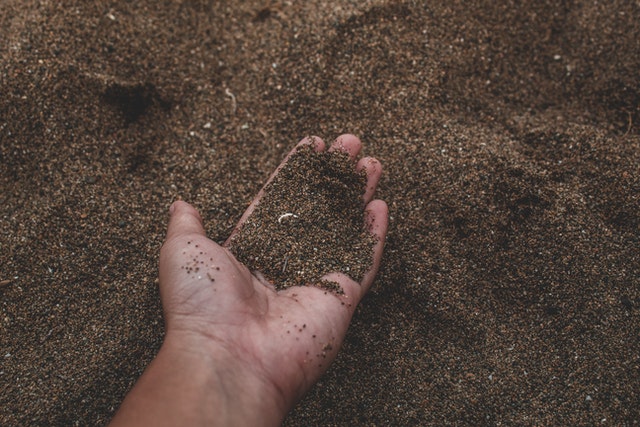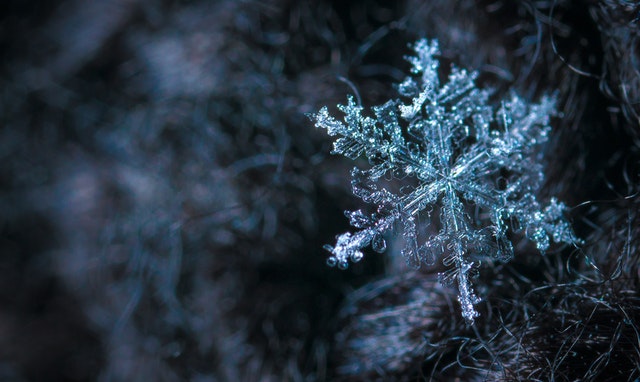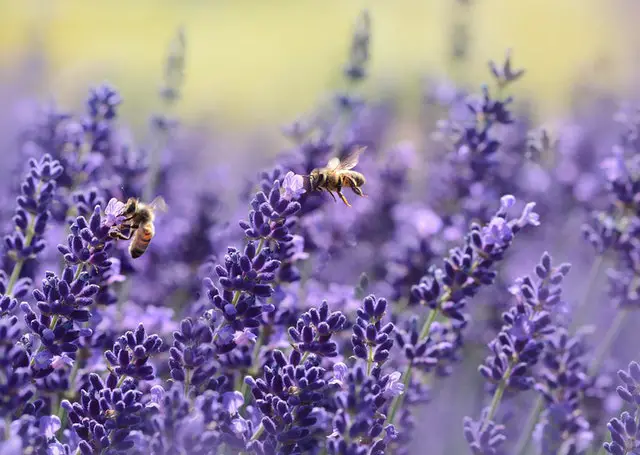Is your lavender plant turning gray? While gray foliage is a characteristic feature of some lavender varieties, if your lavender plant is turning gray and the leaves appear wilted or diseased, it could be a sign of fungal infection, insect infestation, or nutrient deficiency.
The Lavender plant is a highly reputable flowering plant, known for its beautiful floral scent. This plant is a bushy perennial herb with green to gray foliage and its flower spikes. It is from the mint family native to the Mediterranean, Middle East, and India.
It is one plant known to be very useful not only for its gorgeous flowers but also for its medicinal and therapeutic advantages. The oil gotten from Lavender is capable of relieving stress and encouraging sleep.
Note that there are different kinds of Lavender with slight differences in their use and features.
Additionally, the Lavender plant is an easy-going and low-maintenance plant. What could likely go wrong with this plant?
Except of course it becomes sickly and starts to show signs of unhealthiness. Certain problems may arise while caring for this plant and one includes the Lavender plant turning gray.
There are different reasons this could happen, and in this article, we’ll discuss these reasons.
Understanding Gray Foliage in Lavender Plants
When your lavender plant starts turning gray, it can be a cause for concern. While some lavender varieties naturally have gray foliage, if the leaves appear wilted or diseased, it indicates a problem.
Gray foliage in lavender plants can be attributed to various causes, including fungal infections, overwatering, poorly draining soil, wrong pot size, high humidity, low airflow, and frost damage. Understanding the underlying issues and implementing appropriate solutions is key to restoring your lavender plant’s health and vibrancy.
Lavender Plant Turning Gray

In its natural habitat, the Lavender plant is exposed to dry coastal conditions with warm temperature, sunlight, and minimal watering. So if you wish to keep it indoors, you will have to recreate these living conditions.
If not, problems may arise when caring for this plant and its stems and leaves may start to turn gray.
This is a problem often faced by Lavender Growers and mostly is a result of improper care and maintenance of the plant or slack in the provision of its specific living conditions. The plant starts to turn gray at its base which stunts its growth and in turn, may lead to the plant dying.
However, you must note that some Lavender plants have green or slightly gray foliage, so your plant may not be sick after all. But if you are certain it is, here are some causes of this problem, how to solve them and possible prevention measures;
1. Fungal Attack
This is the most common cause of Lavender plants turning gray. And this happens when the fungus is given an entrance to attack the plant with the provision of its most suitable thriving environment, which is a moist environment.
This kind of environment is created when the plant is given too much water than is required or has its roots wet.
The kind of fungus species that attacks the Lavender plant is Botrytis spp. It attacks the plant from its base and makes the leaves and stems turn gray.
A fungal disease is a product of some other conditions which the plant has been exposed to which includes overwatering, slow-draining soil, and pot size.
Fungal infections are remediable; you can treat your plant by first removing the plant from the ground and taking it out of the pot. Thn, examine the roots for possible signs of fungal infections.
If the root is dark and mushy instead of white and firm, then it is infected. Trim off the infected roots as well as gray leaves, with sterilized pruners or scissors; this is so that the infection doesn’t spread throughout the plant.
Check the plant thoroughly so you don’t leave any affected leaves out. Then, discard the old potting soil and wash the pot thoroughly. Replant your Lavender in fresh, well-draining soil to give your plant a fresh start.
Use a good potting mix with 1/3 of sand to improve drainage and replicate the conditions in its natural habitat. Keep the lavender in full sun and away from the rain.
2. Overwatering
The Lavender plant will rather not be given too much water to drink. It is a plant that thrives in dry conditions and is extremely drought-resistant so giving it too much water will be doing it more harm than good and may even invite fungal infections.
When the plant retains too much water, it stunts the supply of chlorophyll in the plant and turns the leaves gray. It may eventually lead to root rot which causes the gray spots in the plant to turn brown and black and then fall off.
You should water the plant once every 2-3 weeks in most weather conditions; water even less in winter. Water the plant every week in its flowering and infant stages to make the plant flourish and hasten its root growth.
You can check the moisture of the plant before watering to be certain the soil is not wet, with the use of a soil gauge.
3. Poorly Draining Soil

This plant thrives with sandy well-drained soil in its natural environments. So the soil for this plant should be able to drain water between watering and should never be left wet or soggy.
Otherwise, a wrong soil type like clay soil which is slow-draining will affect the root and give in to fungus infection.
Use a good potting mix for this plant that contains elements like perlite, coconut coir, and orchid bark; add a fine amount of sand or grit to the soil as well to improve its drainage. This is especially important when amending the soil.
4. Wrong Pot Size
A compact pot could also be the reason for the sudden change of color in your plant. A wrong pot size could suffocate the root and not allow for enough drainage.
This plant requires a pot size of 12-16 inches to allow the plant to conveniently accommodate the functioning of its root system. The pot must also have drainage holes underneath it to drain water from the soil. If your plant’s pot is bigger or smaller than the specific size, you need to repot it.
Also, pots made of clay or terracotta are ideal for this plant as it allows natural air into the plant.
5. High Humidity and Low Airflow
The Lavender plant is not a big fan of moisture, and would rather stay in a warm cozy environment. You do not need to worry about misting or buying humidifiers for this plant like you do for other plants, as they are well to do without them.
Meanwhile, make sure your Lavender plant is at least 2-3 feet apart from other plants to allow for airflow and fulfill its breezy nature. If the plant is not given these conditions then it may likely react to it and invite infections.
6. Frost Damage

The minimum temperature range the Lavender plant requires is between 60 – 86 degrees Fahrenheit. Anything lower than this will introduce the plant to frost damage, which is why it struggles during winter seasons.
However, this may not be true for all Lavenders. English Lavender plants are frost-hardy and can withstand cold temperatures and climates with ice, snow, and frost.
French and Portuguese Lavenders are the much more delicate ones and will require you to take extra caution in the temperature of their environment. A frost lavender will look weak and worn, and the leaves and stems will lose their color and appearance.
So, to avoid this, keep your Lavender plant in a room with 60 – 86 degrees Fahrenheit room temperature.
Endeavor to change its position if the temperature drops below this. Also, remove the plant from outdoors during winter and do not place it near cold drafts like air conditioning units and fans.
If your plant is already turning gray, prune the affected leaves and stems.
Reviving and Maintaining Healthy Lavender Plants
If your lavender plant has already turned gray, pruning the affected leaves and stems can help revive it. Regular maintenance, including appropriate watering, well-draining soil, adequate pot size, optimal growing conditions, and protection from frost, is essential for maintaining healthy lavender plants.
By addressing the specific causes of gray foliage and implementing suitable solutions, you can ensure that your lavender plant thrives, retains its vibrant green color, and continues to release its delightful floral scent.
Outro
The Lavender plant is one easy-to-care plant packed with different benefits. Its presence in any home is an absolute delight and it makes it better that it isn’t a fuss to maintain.
So when this plant indicates graying, then it is fighting against the wrong conditions it has been subjected to.
While a fungal attack is the root cause of Lavender plants turning gray, some other often overlooked reasons exist, such as overwatering, wrong pot size, poorly draining soil, and damage from frost.
Graying mostly starts to show at the base of the plant, so when you notice this, examine your plant’s maintenance culture and adjust accordingly. If your plant has reached its worst stages, in the case of root rot or fungal infection, then you will need to repot it.
Also read: Arborvitae Turning Yellow
Frequently Asked Questions
What does an overwatered Lavender look like?
Overwatered lavender will likely have gray spots that will turn brown and then black, if not attended to quickly. It may have yellow patches on its lower leaves initially. When it is left without care, it will droop and start to fall off.
How do you revive a dying lavender plant?
You must first identify the reason the plant is dying, it may be root rot, low sunlight, wrong soil choice, etc.
When you know the cause of the plant’s problem then you can deal with it by either repotting the plant and pruning in the case of root rot and poorly-drained soil or exposing the plant to bright sunlight as it requires?
How often should Lavender be watered?
In its beginning stage, water the plant, once or twice a week for the plant to be well-rooted. Meanwhile, a mature Lavender doesn’t require as much watering; you can water it once every two to three weeks.

Hey, I’m Lisa and I’ve been an avid gardener for over 30 years. I love writing, talking and living in the garden! Feel free to connect with me on my socials below

